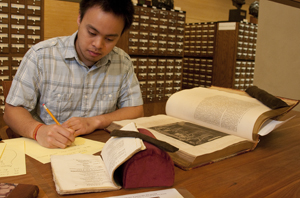Though seldom spoken of, the “book snake” has been a staple for patrons in the Ransom Center’s reading room for many years, while its smaller cousin, the “book worm” has appeared more recently. The story behind these creatures, often seen draped over the sides of books or nestled between the… read more


